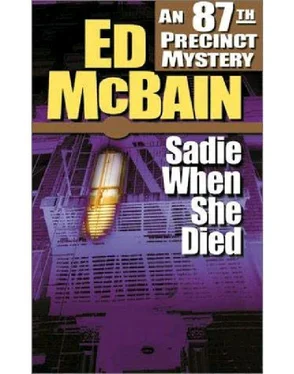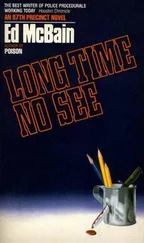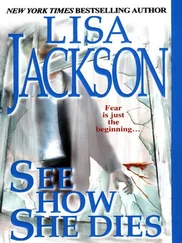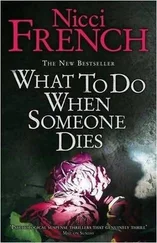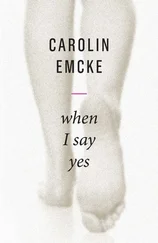Ed McBain - Sadie When She Died
Здесь есть возможность читать онлайн «Ed McBain - Sadie When She Died» весь текст электронной книги совершенно бесплатно (целиком полную версию без сокращений). В некоторых случаях можно слушать аудио, скачать через торрент в формате fb2 и присутствует краткое содержание. Жанр: Полицейский детектив, на английском языке. Описание произведения, (предисловие) а так же отзывы посетителей доступны на портале библиотеки ЛибКат.
- Название:Sadie When She Died
- Автор:
- Жанр:
- Год:неизвестен
- ISBN:нет данных
- Рейтинг книги:4 / 5. Голосов: 1
-
Избранное:Добавить в избранное
- Отзывы:
-
Ваша оценка:
- 80
- 1
- 2
- 3
- 4
- 5
Sadie When She Died: краткое содержание, описание и аннотация
Предлагаем к чтению аннотацию, описание, краткое содержание или предисловие (зависит от того, что написал сам автор книги «Sadie When She Died»). Если вы не нашли необходимую информацию о книге — напишите в комментариях, мы постараемся отыскать её.
Sadie When She Died — читать онлайн бесплатно полную книгу (весь текст) целиком
Ниже представлен текст книги, разбитый по страницам. Система сохранения места последней прочитанной страницы, позволяет с удобством читать онлайн бесплатно книгу «Sadie When She Died», без необходимости каждый раз заново искать на чём Вы остановились. Поставьте закладку, и сможете в любой момент перейти на страницу, на которой закончили чтение.
Интервал:
Закладка:
Meyer knocked on the door. Both men waited. He knocked again.
“Yes?” a woman’s voice said. “Who is it?”
“Police officers,” Meyer answered.
There was a short silence. Then the woman said, “Just a moment, please.”
“Think he’s home?” Meyer whispered.
Carella shrugged. They heard footsteps approaching the door. Through the closed door, the woman said, “What do you want?”
“We’re looking for Lou Kantor,” Meyer said.
“Why?”
“Routine investigation,” Meyer said.
The door opened a crack, held by a night-chain. “Let me see your badge,” the woman said. Whatever else they had learned, the citizens of this good city knew that you always asked a cop to show his badge because otherwise he might turn out to be a robber or a rapist or a murderer, and then where were you? Meyer held up his shield. The woman studied it through the narrow opening, and then closed the door again, slipped off the night-chain, and opened the door wide.
“Come in,” she said.
They went into the apartment. The woman closed and locked the door behind them. They were standing in a small, tidy kitchen. Through a doorless doorframe, they could see into the next room, obviously the living room, with two easy chairs, a sofa, a floor lamp, and a television set. The woman was perhaps thirty-five years old, five feet eight inches tall, with a solid frame, and a square face fringed with short dark hair. She was wearing a robe over pajamas, and she was barefoot. Her eyes were blue and suspicious. She looked from one cop to the other, waiting.
“Is he here?” Meyer asked.
“Is who here?”
“Mr. Kantor.”
The woman looked at him, puzzled. Understanding suddenly flashed in her blue eyes. A thin smile formed on her mouth. “ I’m Lou Kantor,” she said. “Louise Kantor. What can I do for you?”
“Oh,” Meyer said, and studied her.
“What can I do for you?” Lou repeated. The smile had vanished from her mouth; she was frowning again.
Carella took the photostat from his notebook, and handed it to her. “Do you know this woman?” he asked.
“Yes,” Lou said.
“Do you know her name?”
“Yes,” Lou said wearily. “That’s Sadie Collins. What about her?”
Carella decided to play it straight. “She’s been murdered,” he said.
“Mmm,” Lou said, and handed the stat back to him. “I thought so.”
“What made you think so?”
“I saw her picture in the newspaper last week. Or at least a picture of somebody who looked a hell of a lot like her. The name was different, and I told myself, No, it isn’t her, but Jesus, there was her picture staring up at me, it had to be her.” Lou shrugged and then walked to the stove. “You want some coffee?” she asked. “I’ll get some going, if you like.”
“Thank you, no,” Carella said. “How well did you know her, Miss Kantor?”
Lou shrugged again. “I only knew her a short while. I met her in, I guess it was September. Saw her three or four times after that.”
“Where’d you meet her?” Carella asked.
“In a bar called The Purple Chairs,” Lou answered. “That’s right,” she added quickly, “that’s what I am.”
“Nobody asked,” Carella said.
“Your eyes asked.”
“What about Sadie Collins?”
“What about her? Spell it out, officer, I’m not going to help you.”
“Why not?”
“Mainly because I don’t like being hassled.”
“Nobody’s hassling you, Miss Kantor. You practice your religion and I’ll practice mine. We’re here to talk about a dead woman.”
“Then talk about her, spit it out. What do you want to know? Was she straight? Everybody’s straight until they’re not straight anymore, isn’t that right? She was willing to learn. I taught her.”
“Did you know she was married?”
“I knew. So what?”
“She told you?”
“She told me. Broke down in tears one night, lay in my arms all night crying. I knew she was married.”
“What’d she say about her husband?”
“Nothing that surprised me.”
“What, exactly?”
“She said he had another woman. Said he ran off to see her every weekend, told little Sadie he had out-of-town business. Every goddamn weekend, can you imagine that?”
“How long had it been going on?”
“Who knows? She found out about it just before Christmas last year.”
“How often did you say you saw her?”
“Three or four times. She used to come here on weekends, when he was away. Sauce for the goose.”
“What do you make of this?” Carella said, and handed her Sarah’s address book, opened to the MEMORANDA page.
“I don’t know any of these people,” Lou said.
“The initials under your name,” Carella said.
“Mmm. What about them?”
“TPC and then TG. Got any ideas?”
“Well, the TPC is obvious, isn’t it?”
“Obvious?” Carella said.
“Sure. I met her at The Purple Chairs,” Lou said. “What else could it mean?”
Carella suddenly felt very stupid. “Of course,” he said, “what else could it mean?”
“How about those other initials?” Meyer said.
“Haven’t the faintest,” Lou answered, and handed back the book. “Are you finished with me?”
“Yes, thank you very much,” Carella said.
“I miss her,” Lou said suddenly. “She was a wild one.”
Cracking a code is like learning to roller-skate; once you know how to do it, it’s easy. With a little help from Gerald Fletcher, who had provided a guided tour the night before, and with a lot of help from Lou Kantor, who had generously provided the key, Carella was able to study the list in Sarah’s book and crack the code wide open. Well, almost wide open.
Last night, Fletcher had taken him, in geographical rather than numerical order, to Paddy’s Bar & Grille (PB&G), Fanny’s (F), The Purple Chairs (TPC), and Quigley’s Rest (QR). For some reason, perhaps to avoid duplication, Sarah Fletcher had felt it necessary to list in code the places in which she had met her various bedmates. It seemed obvious to Carella, now that he knew how to roller-skate, that the TS beneath Michael Thornton’s telephone number was meant to indicate nothing more than The Saloon, where Thornton had admitted first meeting her. Gerald Fletcher had not taken Carella there last night, but perhaps the place had been on his itinerary, with the scheduled stop preempted by his own drunkenness and the fight in Quigley’s Rest.
But what the hell did TG mean?
By Carella’s own modest estimate, he had been in more damn bars in the past twenty-four hours than he had in the past twenty-four years. But he decided nonetheless to hit The Saloon that night. You never learned anything if you didn’t ask, and there were imponderables even in roller-skating.
Three wandering violinists moved from table to table playing a medley of “Ebb Tide,” “Strangers in the Night,” and “Where or When,” none of which seemed to move Nora as much as “Something” had. Fake potted palms dangled limpid plastic fronds while a small pool, honoring the name of the place, gushed before a painted backdrop of desert sand and sky.
“I’m glad you called,” Nora said. “I hate to go straight home after the end of a busy day. The apartment always feels so empty. And the meeting today was a disaster. The art director is a man who started in the stockroom forty years ago, after a correspondence course from one of those schools that advertise on matchbook covers. So he had the gall to tell me what was wrong with the girl’s hand.” She looked up from her drink and said, in explanation, “It was this drawing of a girl, with her hand sort of brushing a strand of hair away from her cheek.”
Читать дальшеИнтервал:
Закладка:
Похожие книги на «Sadie When She Died»
Представляем Вашему вниманию похожие книги на «Sadie When She Died» списком для выбора. Мы отобрали схожую по названию и смыслу литературу в надежде предоставить читателям больше вариантов отыскать новые, интересные, ещё непрочитанные произведения.
Обсуждение, отзывы о книге «Sadie When She Died» и просто собственные мнения читателей. Оставьте ваши комментарии, напишите, что Вы думаете о произведении, его смысле или главных героях. Укажите что конкретно понравилось, а что нет, и почему Вы так считаете.
